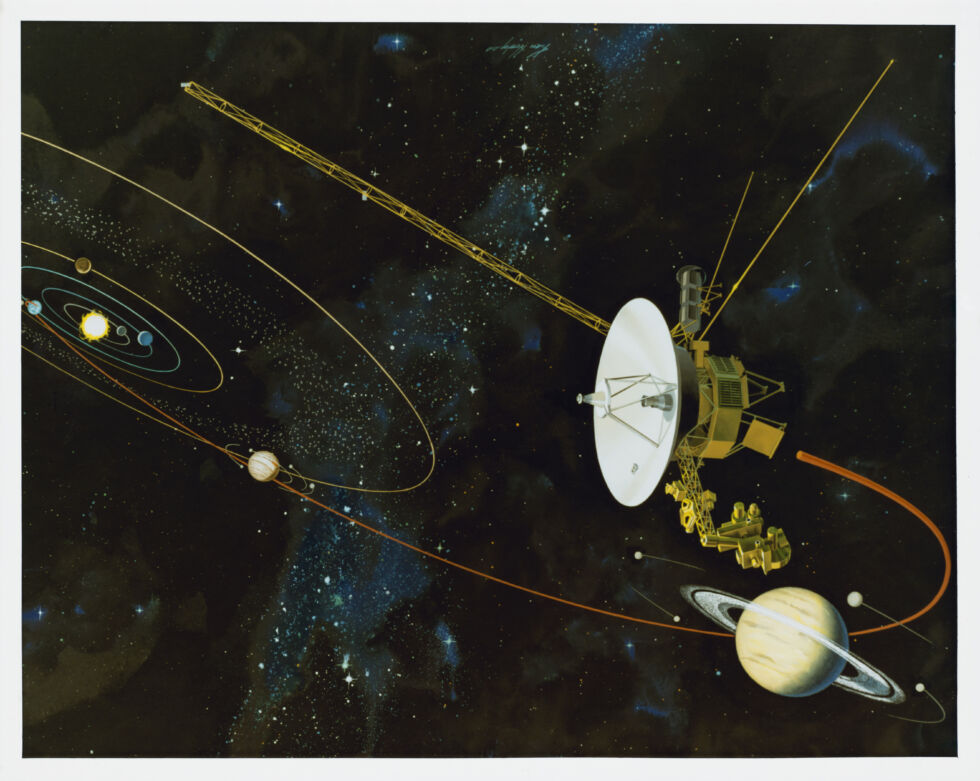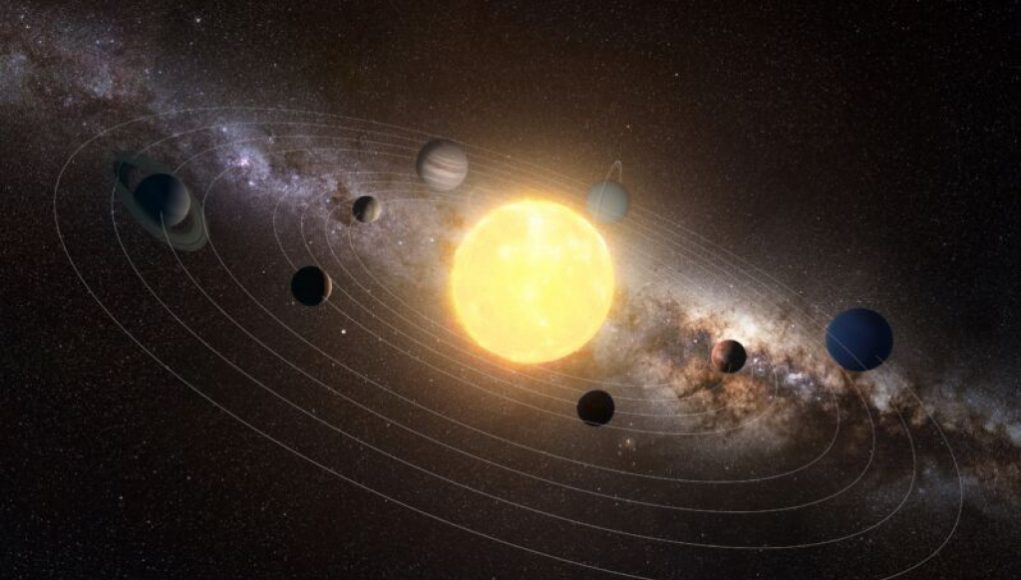On August 25th, 2012, humanity became an interstellar species. There was no fanfare or galactic welcome party as a humble robotic probe, the Voyager 1 spacecraft, crossed an invisible threshold. It slipped between the region dominated by the physics of the Sun and into the thin milieu of plasma between the stars.
Whatever fate befalls us now, whatever future civilizations rise and fall, whether we heal the Earth or continue our self-destructive path, we will still, and always, have this. A monument, a marker, a testament to the existence of our species and the ingenuity of our minds. It’s unlikely that any alien civilization will encounter our spacecraft, yet it will still exist, circling the center of the Milky Way for eons to come.
In the coming decades, Voyager 1 will be joined by other craft sent along solar-escape trajectories: the Pioneer probes, New Horizons, and more. And now that we’ve crossed this astrophysical threshold, we are forced to ask a difficult question: Is this it? Is this all we’ll ever accomplish beyond the Solar System, a scattering of wayward probes sent out into the infinite night?
For decades, scientists, engineers, and dreamers have worked to develop technologies that can radically expand our presence outside the Solar System. But they all face one enormous challenge: the brain-breaking enormity of the cosmos. Sustained interstellar travel is simply beyond the means of our technology, and any reasonable projection of anything we’ll develop over the next few generations.
Thankfully, that doesn’t mean our space dreams are dead. We’ll have to learn to love the one we’re with and stop looking beyond to impossible frontiers and instead turn our curious eyes and minds to the wonders and mysteries of our own Solar System.
Advertisement
The slow way
To put the challenge of interstellar travel in perspective, let’s build a scale model of our local neighborhood. Go find a couple willing volunteers (friends, relatives, sleeping cats, whatever). Place one in the center of the room—that’s the Sun. Place yourself, playing the part of the Earth, and stand three feet away from them. That’s our Solar System, with those three feet representing the 93 million miles between our planet and our star.
Your second volunteer will be Proxima Centauri, the nearest star to the Sun, which sits 4.246 light-years away. Our choice of light-year as a unit here masks the true monstrosity of the distance, tucking it away inside a term that’s really beyond comprehension instead of letting us appreciate what the numbers mean. To get that appreciation, play a game with your second volunteer: Ask them to position themselves where they think Proxima should be in the scale model.
Then pack them a lunch and shove them in the car because they have to travel over 200 miles away.
The Voyager 1 probe has been playing the real-life version of this. Launched on September 5th, 1977, the spacecraft reached Neptune, the outer sentinel of the Solar System, over a decade later.

And since then, it has not encountered another world.
Voyager 1 has enough speed to overcome the gravitational pull of the Sun. Save for a freak cosmic accident, it’s never coming back. Cruising at a speed of over 56,000 kilometers per hour (35,000 mph)—it could circumnavigate the Earth in less than 45 minutes—it managed to cross the heliopause after roughly 35 years of travel time. The heliopause is widely considered to the boundary of the Solar System and is a region marked by a sharp change in the density of charged particles that constantly float through space. The interior of the heliopause is dominated by the particles emanating from the Sun itself; beyond it, you’ll find yourself in a mixture generated by billions of distant stars.
As technological capabilities and scientific understanding expand, humanity’s capacity to leave the solar system develop at an unprecedented rate. Our capacity to design spacecraft, engines, and supplementary systems that can function outside of the familiar gravitational system of our home star has brought about new possibilities. The sun, its planets, and the rest of our local cosmos, therefore, are no longer exclusive confines.
At current, extraterrestrial settlement remains the most substantial positive outcome of our sped-up ability to escape the solar system. Our current capabilities are pushing us towards possibilities of colonizing other worlds, though short of forming bases outside of Earth’s gravitational environment, no large-scale space colonization has yet occurred.
Yet as fast as exploration has become, we have not found a way for vessels traveling through interstellar space shortcuts. The majority of our travel remains limited by physical constraints dictated by the principles of relativity and particle physics. The reality of our solar system limits us to traversing the cosmos at light speed or slower. In spite of our maximal technological capability, we will never be able to travel from the outside of our galaxy to its farthest edges in a short amount of time.
For all our success in departing the solar system and traversing the galaxy, much of the journey to wherever we wish to go will take hundreds or thousands of years in transit. Thus, in spite of our profound and fast advancements, we find ourselves fallible against cosmic constraints; we can slip the bonds of our home Solar System but the time until reaching our desired destinations is still too slow to imagine.
Overall, our abilities to be able to depart the solar system at a swift pace have been exceptionally successful. Unfortunately, the prospect of swift arrival, as opposed to swift departure, is still limited by natural bounds. We remain hopeful that further development of technological capabilities and scientific understanding can provide an answer as we continue to explore the many possibilities of outer space.




















